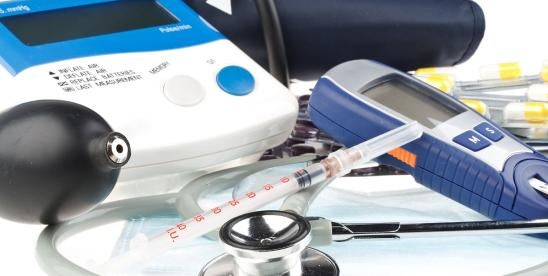License Exception MED, published by the US Department of Commerce’s Bureau of Industry and Security (BIS) on April 25, authorizes the export, reexport, or in-country transfer of EAR99 “medical devices” to non-military hospitals but comes with new restrictions and due diligence requirements.
Background
Since Russia’s further invasion of Ukraine began on February 24, 2022, BIS has steadily expanded export controls to include license requirements for nearly all medical devices (think everything from X-ray machines and sophisticated equipment to catheters and needles). In the meantime, the Crimea, Donetsk, and Luhansk regions of Ukraine — currently under Russian occupation — are subject to a near-total embargo as well as comprehensive economic sanctions.
Starting on April 29, medical device exporters will be able to take advantage of License Exception MED under § 740.23 of the Export Administration Regulations (EAR).
What Does MED Cover?
Items Included
Only “medical devices” which are EAR99 (i.e. not described on the Commerce Control List (CCL))[1] and EAR99 parts, components, accessories or attachments, thereof. BIS defines “medical devices” using the definition of “device” under Sec. 201 of the US Food, Drug, and Cosmetic Act:
“[A]n instrument, apparatus, implement, machine, contrivance, implant, in vitro reagent, or other similar or related article, including any component, part, or accessory, which is—
- recognized in the official National Formulary, or the United States Pharmacopeia, or any supplement to them,
- intended for use in the diagnosis of disease or other conditions, or in the cure, mitigation, treatment, or prevention of disease, in man or other animals, or
- intended to affect the structure or any function of the body of man or other animals, and which does not achieve its primary intended purposes through chemical action within or on the body of man or other animals and which is not dependent upon being metabolized for the achievement of its primary intended purposes…”
Destinations
Russia, Belarus, and the Crimea, Donetsk, and Luhansk regions of Ukraine.
Additional Requirements for Replacement Parts
Replacement parts for medical devices are covered by MED only if:
- The sole purpose of the transaction is to replace a broken or nonoperational part, component, accessory, or attachment of a “medical device” that is already authorized under MED.
- The number of replacements being exported or stored doesn’t exceed the number of parts being used with or in the relevant medical devices within Russia, Belarus, or the embargoed areas of Ukraine.
Watch Out! Limits, Restrictions, and Due Diligence
MED only lets exporters off the hook from license requirements under EAR Sections 746.5 (Russia/Belarus industry sector sanctions), 746.6 (embargo on Crimea, Donetsk, and Luhansk), or 746.10 (luxury goods sanctions on Russia/Belarus) of the EAR. It does NOT apply to:
- Any other license requirements, like those that still very much apply for any item described on the CCL, or any item captured by a foreign direct product rule (even if the same US-produced item is now authorized by MED).
- Restrictions on proscribed persons or restricted end uses. Don’t stop double-checking for any end users that may be military hospitals.
- Export, re-export, or transfer to any production facility or with knowledge that the item will be used to develop or produce other things (as opposed to being used directly as a medical device). Assembly of a medical device in a hospital or medical facility for use in that same hospital or facility is still okay.
Additionally, parties relying on MED must “maintain a system of distribution that ensures that [items exported, reexported, or transferred] are not delivered to proscribed persons or to any entities engaged in any type of production.” BIS provides several examples of acceptable verification procedures: obtaining affirmations or other documentation from a consignee, or periodic on-site spot-checks (e.g., by the exporter, an auditing firm, or a recognized nongovernmental organization [NGO]). BIS officials have verbally confirmed that the agency deliberately included options other than on-site verification, given the risks and impracticalities nowadays of snooping around Russia to do checks on US export compliance.
Verification records must be maintained for five years and provided to BIS upon request.
Takeaways
License exception MED provides much-needed relief for US medical suppliers who have had to contend with the BIS’s license requirements, follow-up questions, and at-time lengthy approval process over the last couple years. However, any business which deals with Russia (or with Belarus, not to mention the comprehensively embargoed and sanctioned Ukrainian regions of Crimea, Donetsk, and Luhansk) should not let down their guard. It remains as important as ever to screen customers and counterparties, verify end use, and keep good records. Contact your export compliance counsel if you have any questions or concerns.
[1] Due to the EAR’s Statement of Understanding on “medical equipment,” commodities incorporating items on the CCL not controlled for frightening reasons (nuclear/chemical/biological weapons or missiles) that are specially designed for medical end-use, are classified as EAR99.




 i
i


